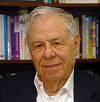Richard Adams in Washington
Monday October 15, 2007
Guardian Unlimited
http://business.guardian.co.uk/print/0,,330963220-125305,00.html
Three US-based economists - the game theory pioneer Leo Hurwicz, along with Eric Maskin and Roger Myerson – were today awarded the 2007 prize for work spanning 50 years in a branch of game theory that has come to be known as mechanism design.
In its statement announcing the award, the Nobel committee said: "The theory allows us to distinguish situations in which markets work well from those in which they do not. It has helped economists identify efficient trading mechanisms, regulation schemes and voting procedures."
While highly abstract and mathematical, mechanism design theory has concrete applications in the real world. It can provide important justifications for government intervention in the operation of markets such as health care, as well as helping to construct rules that attempt to avoid the disparity in information between groups of buyers and sellers.
That gap in knowledge is known in economics as "information asymmetry" and it has become one of the most widely studied aspects of the discipline.
In recent years economists such as George Akerlof and Joseph Stiglitz have been awarded Nobel prizes for their work in the field.
Because sellers have an incentive to seek the highest possible sale price, and buyers have the opposite incentive, and both parties have different levels of knowledge about the overall value of the transaction, the final outcome may not efficient for the economy as a whole. Mechanism design theory attempts to identify these breakdowns and avoid them where possible.
The influence of mechanism design theory can be seen in the structure of auctions, such as the UK government's sale of 3G mobile phone licenses in 2000, which netted the exchequer more than £22bn in revenue. That was thanks to an innovative procedure designed to squeeze potential buyers into making bids that reflected what they saw as the true worth of the licences, and prevented them colluding to pay lower prices.
Prof Hurwicz began working on forms of game theory with the influential economist Kenneth Arrow, who first outlined the pitfalls of information asymmetry in the 1960s and was awarded the Nobel prize in economics in 1972. But Arrow's work built on some of Hurwicz's research in the 1950s, and Hurwicz was regarded as having been overlooked, until now.
Myerson is a prolific author of academic papers and computer software tackling the subject. He is best known as one of the authors of an influential principle in mechanism design theory, the Myerson-Satterthwaite theorem, which finds that one side of a transaction stands to make a loss of some kind when two parties trade a good where they each have hidden and differing information.
Maskin has worked on the optimal design of auctions, alongside his colleague John Riley, and was hired to advise the Italian government on the operation of its bond auctions. He has previously worked as a research student and visiting fellow at Cambridge University.
Thanks to Gary for sending me this link. The topic deserves a lot more of my attention. The above article describes a perfectly crafted Hegelian "solution." Now we have a highly abstract and mathematical "game" theory that has concrete applications in the real world. Oh yippie.













No comments:
Post a Comment